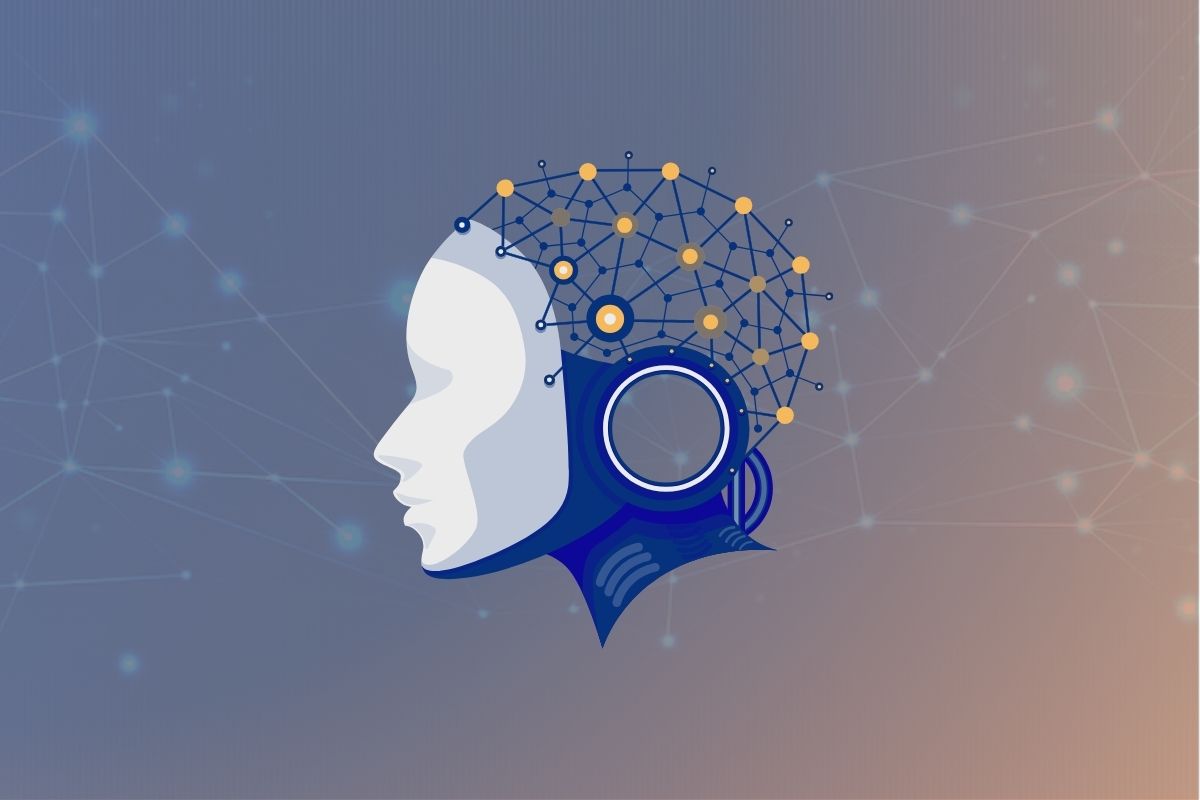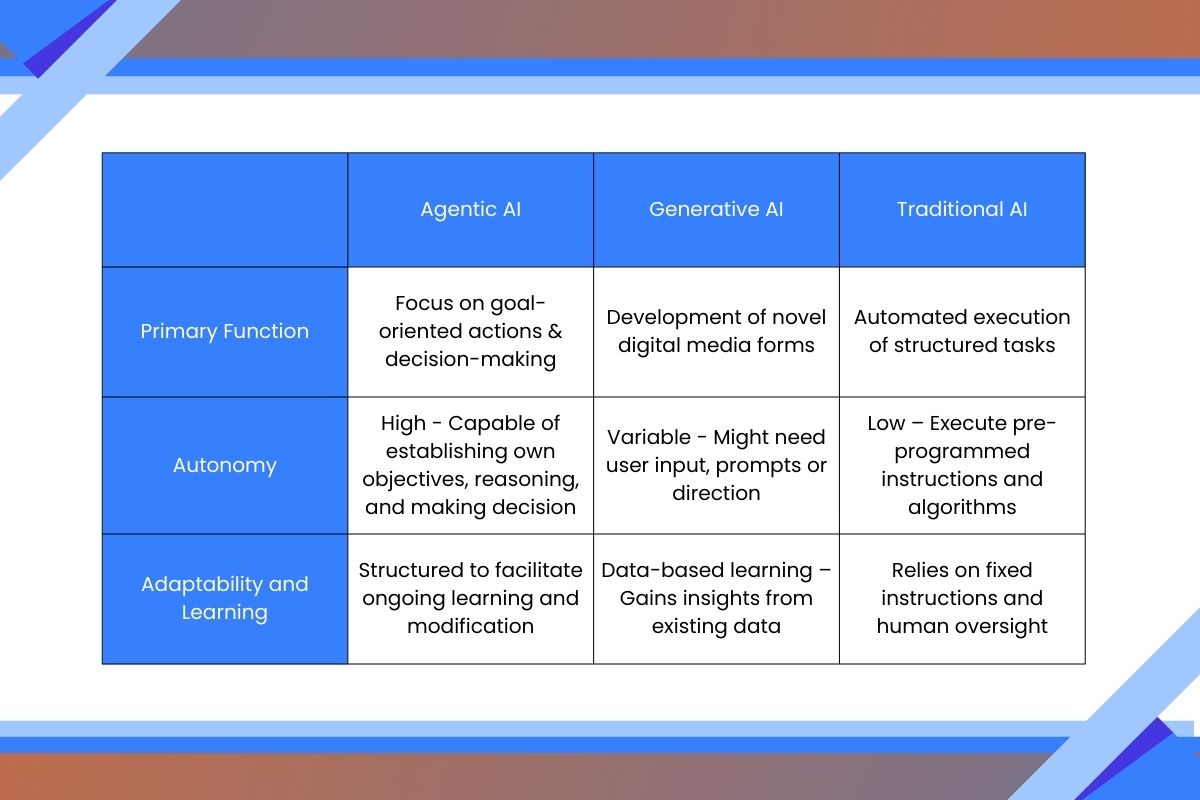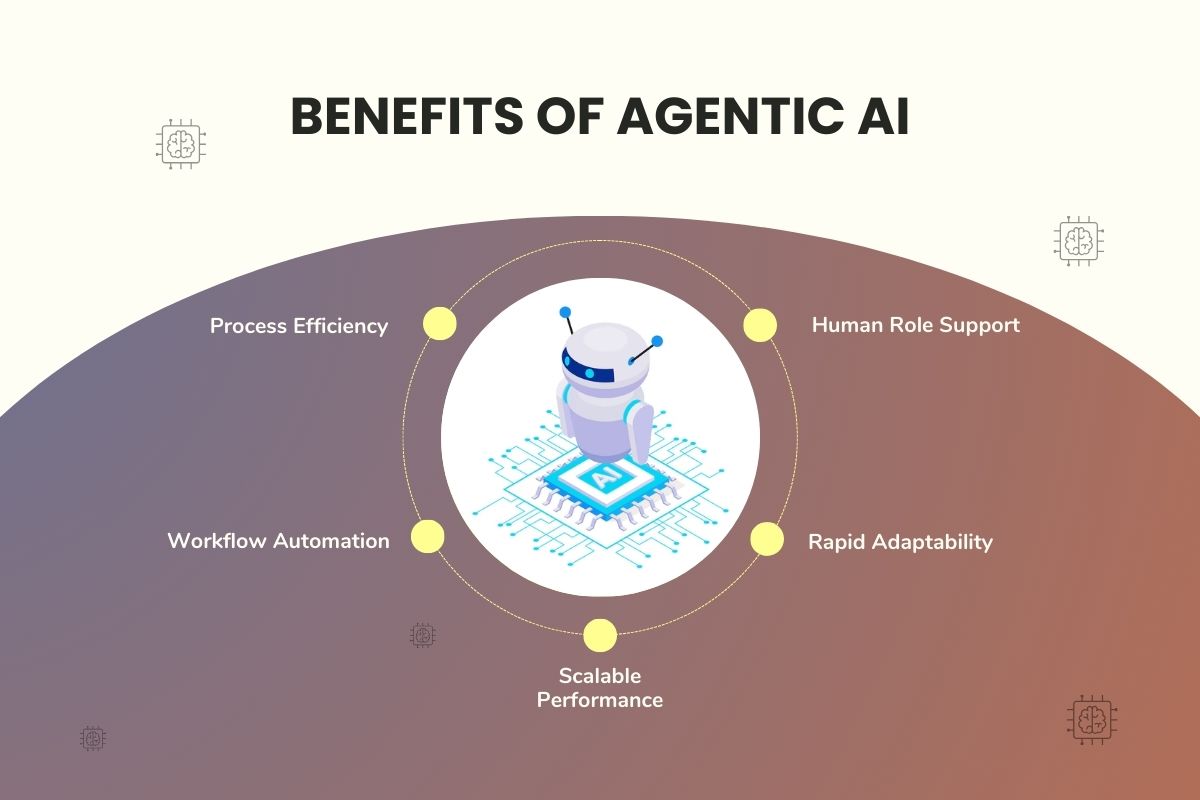In recent years, artificial intelligence (AI) has transitioned from a concept of speculative fiction to a transformative technology that influences nearly every sector of modern life.
As AI continues to evolve, one of the most promising and groundbreaking developments on the horizon is Agentic AI. This next-generation AI technology is poised to redefine the way humans interact with machines, offering capabilities far beyond traditional automation.
In this article, we will dive deep into what Agentic AI is, and why it is poised to revolutionize various industries. From the basics of decision-making to the progressive technologies that power these systems, we will explore how Agentic AI is reshaping the future of automation, optimization, and intelligent decision-making.
What is Agentic AI Definition
Agentic AI refers to a type of artificial intelligence that goes beyond simply responding to commands or processing data. It involves AI systems that possess a degree of autonomy, proactiveness, and goal-oriented behavior.
The term “agentic” stems from the idea of AI agents acting on behalf of their users, much like an assistant or agent would in human-centric roles.
At its core, Agentic AI refers to AI systems that have the ability to make decisions, take actions, and learn from their interactions in order to achieve specific goals. These systems are designed to function autonomously, adapting to their environments and refining their actions based on experience.
Defining Autonomous Action
Autonomous action means that these AI systems can operate independently, requiring minimal to no human input once they are set in motion. They are capable of analyzing situations, making decisions, and executing actions based on those decisions. This is a major leap from traditional AI, which typically requires constant human oversight.
Agentic AI vs. Generative AI vs. Traditional AI
While Agentic AI is a powerful and versatile system, it is essential to understand how it compares to other systems.
In essence, traditional AI follows instructions, generative AI creates, and agentic AI acts independently, representing a progression towards more sophisticated and self-directed AI systems.
Features of Agentic AI
The most defining features of Agentic AI include:
- Autonomous Decision Making: The ability to make decisions and act upon them.
- Goal-Orientation: Focusing on achieving specific, predefined objectives.
- Learning and Adaptation: Continuously improving through experience.
- Contextual Awareness: Understanding the conversation flow and continuing based on the context.
- Multi-Agent System: Collaborative intelligence for complex task execution through coordinated agent interaction
Autonomy: The Power to Act Independently
Autonomy is at the heart of Agentic AI. Once set into motion, these systems can carry out tasks without needing constant human intervention. The AI’s real-time capabilities for input processing, decision-making, and action execution are driven by advanced algorithmic frameworks.
Goal-Oriented Behavior
Agentic AI shifts the focus from tasks to tangible results. These systems are designed with specific goals in mind, and they work autonomously to achieve those goals by making informed decisions along the way. Whether it’s optimizing a workflow, driving a car, or making a stock trade, Agentic AI is always focused on a particular outcome.
Learning and Adaptation
Thanks to machine learning and deep learning, these systems constantly improve as they learn from every interaction and experience. This means they can adapt to changing environments and situations, becoming more efficient and accurate over time.
Contextual Understanding
Agentic AI system has the capacity to understand the context of a situation, making decisions that are appropriate for the circumstances. This level of understanding is crucial when dealing with complex, dynamic environments, such as traffic conditions for autonomous vehicles or market fluctuations for trading bots.
Multi-Agent System
Agentic AI enables collaborative workflows through multi-agent communication, integrating with diverse tools like email and search engines. For example, in research, it can autonomously gather, analyze, and report data, coordinating with other AI for improved outcomes. This connectivity boosts productivity and decision-making, positioning Agentic AI as a key advancement in autonomous systems.
Agentic AI Use Cases
Agentic AI is transforming everything from customer service and cybersecurity to healthcare — simplifying workflows, handling complexity, and boosting efficiency across the board.
Here’s a breakdown of some Agentic AI Use Cases:
1. Customer Service Automation
With Agentic AI, intelligent virtual assistants are stepping up to manage customer service conversations on their own. AI agents not only respond to basic inquiries but also resolve complex issues by interpreting customer histories and understanding nuanced contexts. For example, in an e-commerce setting, an Agentic AI system can handle returns, exchanges, and refunds, ensuring a smooth customer experience without the need for human agents.
Gartner predicts “Agentic AI to automate 80% of customer service queries by 2029.”
2. Supply Chain Optimization
In supply chain management, Agentic AI systems can autonomously predict demand fluctuations, monitor inventory levels, and adjust procurement strategies. By constantly learning from historical data and external factors (e.g., weather, market conditions), these AI systems ensure optimal inventory management and improve supply chain efficiency.
3. Healthcare Automation
A revolution in patient care one of the most impactful areas for Agentic AI is in healthcare. Healthcare AI agents empower clinicians to diagnose faster, manage patient care more efficiently, and anticipate future health patterns. With the right AI-powered systems in place, hospitals and clinics can improve patient outcomes, reduce operational costs, and enhance overall service delivery.
4. Financial Services
Agentic AI leverages its ability to process and analyze large datasets in real-time, identifying irregularities and patterns that could indicate potential risks. By cross-referencing past transaction data with ongoing activity, it can autonomously flag suspicious actions for deeper investigation, streamlining the fraud detection process.
Furthermore, by consistently tracking market fluctuations, Agentic AI offers valuable insights that help refine investment strategies. This AI-powered approach enhances decision-making at scale, allowing businesses to respond swiftly and effectively to emerging threats and opportunities.
5. Cybersecurity
Through continuous learning from incoming data, Agentic AI systems can detect abnormal patterns, pinpoint potential security gaps, and automatically implement defensive actions, all without needing constant human supervision. For instance, AI agents can recognize phishing threats through email data and user behavior, blocking the attack and alerting IT, which boosts security and lessens the burden on human staff.
Benefits of Agentic AI
Agentic AI empowers organizations to achieve unprecedented levels of efficiency and scalability, turning what was once aspirational into a practical reality.
By automating complex workflows autonomously, Agentic AI allows businesses to quickly adapt to changing conditions while enabling employees to focus on high-value, strategic tasks. This transformation accelerates innovation, boosts productivity, and enhances overall business performance.
1. Increased Process Efficiency and Scalability
Agentic AI pushes the boundaries of process automation, offering unmatched efficiency and scalability. By adapting complex workflows autonomously, it reduces the need for manual input, while its self-learning capabilities optimize decision-making for even greater efficiency over time. This eliminates the need for constant reprogramming, reduces disruptions, and ensures the system can scale seamlessly without performance degradation.
2. Automation of Complex Workflows
The ability of Agentic AI to autonomously execute and manage complex workflows offers significant advantages. For instance, in supply chain management, agentic AI can analyze data from various sources, predict demand, identify potential bottlenecks, and suggest solutions. An AI agent can monitor inventory levels, forecast supply needs, and even communicate with suppliers through APIs to maintain optimal stock levels, minimizing downtime and ensuring smooth operations.
3. Performance Scalability
Conventional automation struggles to scale, frequently needing hands-on upgrades as workflows become more complex. In contrast, Agentic AI combines the power of cloud platforms, APIs, and large language models (LLMs) to support increasing workloads without sacrificing performance. Its scalability is further enhanced by a multi-agent architecture, where multiple AI agents work collaboratively on interconnected tasks. AI agents for healthcare, for example, one agent could analyze patient data, while another handles scheduling, all within a unified system that reduces the need for human oversight.
4. Quick Response and Adaptability
A key strength of Agentic AI lies in its ability to make fast decisions and adapt swiftly. By processing real-time data and adjusting its actions based on changing conditions, agentic AI guarantees timely and efficient responses, even in fast-paced environments. For instance, an AI-powered logistics system can quickly revise delivery timelines when new information arises, such as shipping delays or fluctuating demand.
5. Supporting Human Roles
Through the automation of repetitive tasks, agentic AI empowers human employees to focus on more impactful and high-value work, streamlining processes across the board. This shift allows workers to concentrate on activities requiring creativity, emotional insight, and human intuition, which leads to increased productivity and a more creative, engaging workplace.
While agentic AI operates with a high degree of autonomy, it is crucial to maintain a balance with human oversight. Human involvement ensures that agentic AI aligns with organizational goals, ethical standards, and long-term strategies.
- Automation of Repetitive Tasks: Agentic AI excels in automating cognitive tasks that are typically time-consuming, such as scheduling and addressing routine customer inquiries. By taking over these tasks, agentic AI enables employees to focus on more complex, creative, and strategic challenges, ultimately driving greater innovation and value for the organization.
- Decision-Making Support: One of the key advantages of Agentic AI is its ability to process and analyze vast amounts of data quickly. It provides valuable insights to support human decision-making. In financial services, for instance, agentic AI can track market trends in real time and deliver in-depth analysis, empowering analysts to make smarter, data-driven investment decisions.
- Customized Customer Support: Agentic AI enhances the customer service experience by analyzing individual user data and preferences to offer personalized services. In support environments, it provides human agents with relevant information, allowing for faster and more meaningful interactions with customers, which in turn boosts customer satisfaction and loyalty.
- Collaboration and Communication: Agentic AI bridges communication gaps between departments and teams, providing relevant insights to support alignment and improve collaboration. For example, in project management, agentic AI can track progress, identify bottlenecks, and provide updates to team members, ensuring everyone is informed and working towards the same objectives.
- Creativity and Innovation: Through the automation of routine tasks and the delivery of data-driven insights, Agentic AI allows human staff to focus their cognitive energy on creative problem-solving and innovation. In marketing, for instance, agentic AI workflows can examine consumer behavior and market trends, providing the insights needed to develop unique campaigns and content strategies designed for specific audiences.
Risks and Ethical Considerations of Agentic AI
While Agentic AI systems operate autonomously, it is crucial to ensure their actions are in line with both the goals of the organization and ethical principles. In industries like healthcare and cybersecurity, where errors can have severe repercussions, establishing clear accountability structures to define AI autonomy and maintain human oversight is vital to reduce the risks associated with AI-driven decisions.
1. Autonomy and Accountability in Agentic AI
As AI agents grow increasingly capable of making independent decisions, the issue of accountability becomes crucial, especially when those decisions lead to unintended consequences. For instance, if an AI agent autonomously approves a loan that results in a significant financial loss, determining who is accountable becomes difficult—should the responsibility lie with the AI developer, the organization using the AI, or the AI itself? Defining clear accountability is essential to managing the risks of relying on agentic AI for decision-making.
2. Data Privacy Concerns with Agentic AI
The effectiveness of Agentic AI is rooted in its use of large, sensitive datasets. However, this reliance introduces potential privacy risks, especially if data governance frameworks are weak or absent. The opacity of autonomous decision-making only adds to the challenge of accountability. Organizations must proactively enforce data protection strategies, comply with global standards such as GDPR, CCPA, and India’s DPDP Act 2023, and adopt privacy-by-design methodologies to protect user data from the beginning.
3. The Downside of Over-Dependence on Autonomous Choices in Agentic AI
While Agentic AI enhances efficiency, over-reliance on its autonomous decision-making can be detrimental. Complete delegation to AI can exclude human insight, potentially causing flawed or ethically questionable outcomes. To mitigate such risks, organizations should preserve a hybrid model where AI operates under human supervision. Periodic audits and live monitoring can help ensure AI decisions stay aligned with core business and ethical standards.
4. Transparency and Ethical Oversight for Agentic AI Systems
Ethical use of Agentic AI hinges on the creation of comprehensive governance models that guide both its construction and use. Every phase—from design to deployment—should incorporate clear ethical standards. This includes setting well-defined roles for AI systems and enforcing transparency in how decisions are made. Prioritizing accountability and explainability ensures responsible AI adoption and builds trust.
Responsible Practices for Managing Agentic AI Risks
Responsible practices are essential for mitigating the risks associated with Agentic AI.
- Monitoring: Ongoing tracking of AI agent performance ensures these systems stay on course, adhering to both organizational objectives and ethical standards. Anomaly detection tools allow for real-time intervention, helping address issues before they escalate.
- Regular Audits: By analyzing data from agentic AI use cases, organizations can optimize workflows and identify vulnerabilities. Periodic reviews also help ensure that AI systems evolve in alignment with both organizational goals and ethical standards.
- Clear, Transparent Decision Making Frameworks:Transparent models promote trust and offer a solid basis for human oversight. With Explainable AI (XAI), decisions made by AI become more understandable, ensuring they align with organizational and ethical goals.
By embracing responsible practices, organizations can fully tap into the power of Agentic AI while safeguarding data privacy and addressing ethical challenges. Successful integration depends on a strong commitment to accountability, transparency, and privacy to unlock AI’s potential responsibly.
The Future of Agentic AI
The future of Agentic AI is set to transition from task-specific agents to more adaptable, multi-domain systems that can manage interconnected workflows. This evolution marks a significant advancement in AI workflows, bringing agentic AI closer to achieving human-like adaptability and contextual comprehension.
Currently, most AI systems excel in specific, well-defined tasks—whether automating customer interactions or optimizing logistics. However, the vision is to integrate advanced capabilities such as cross-domain learning and real-time collaboration across diverse environments.
AI agent use cases will expand to include more complex, interconnected tasks that require systems to learn from multiple domains simultaneously.
Conclusion
The rise of Agentic AI marks a transformative shift in the landscape of artificial intelligence, moving beyond traditional automation into a future where autonomous systems can make informed decisions and learn from experience. As this technology advances, it promises to revolutionize industries ranging from customer service to healthcare and cybersecurity, offering increased efficiency, scalability, and smarter decision-making.
However, with this power comes responsibility, as ethical considerations around data privacy, autonomy, and accountability must be addressed to ensure these systems align with human values and organizational goals.
The integration of Agentic AI presents both exciting opportunities and significant challenges. For organizations seeking to adopt these systems, maintaining a balance between AI autonomy and human oversight will be essential to maximize the benefits while mitigating potential risks. By establishing clear governance frameworks and monitoring mechanisms, businesses can responsibly unlock the full potential of Agentic AI, leading to more innovative, adaptive, and efficient operations.
Ready to explore how AI and ML solutions can transform your business operations?
Reach out to our experts today to learn how these intelligent systems can drive growth, streamline processes, and future-proof your organization.








 What is XBRL: Learn the Definition, its Benefits, and Trends
What is XBRL: Learn the Definition, its Benefits, and Trends  Agentic AI vs Generative AI: What’s the Difference and Why It Matters
Agentic AI vs Generative AI: What’s the Difference and Why It Matters  The Hidden Costs of Incorrect EDGAR Filing and XBRL Tagging – And How to Avoid Them
The Hidden Costs of Incorrect EDGAR Filing and XBRL Tagging – And How to Avoid Them  What is Agentic AI and How It’s Transforming Business Operations
What is Agentic AI and How It’s Transforming Business Operations  AI Tools For Small Businesses
AI Tools For Small Businesses 